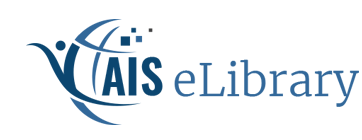Start Date
11-8-2016
Description
Municipalities face huge challenges today in the context of rapid technological changes and E-government. Therefore business-IT alignment (BIA) plays a growing role in municipalities today. We consider the level of BIA in Swiss municipalities based on various variables relating to municipality size, artefacts that underpin BIA, and the satisfaction of the municipalities with IT services. We investigate BIA using a deductive approach that employs a survey and develops a structured equation model (SEM). BIA is more of an issue the larger the municipality (number of inhabitants). The results show significant indications that these artifacts and roles make a significant contribution to user satisfaction and hence to BIA. Roles, tasks, competencies and responsibilities, defining- and documentation artifacts as well as structural differentiation of IT and the degree of internal IT management and standardization frameworks are elements which can be clustered into the factors of structural differentiation of IT and IT management.
Recommended Citation
Walser, Konrad; Weibel, David; Wissmath, Bartholomäus; Enkerli, Simon; Bigler, Nicolas; and Topfel, Martin, "Business-IT Alignment In Municipalities: The Swiss Case" (2016). AMCIS 2016 Proceedings. 2.
https://aisel.aisnet.org/amcis2016/eGov/Presentations/2
Business-IT Alignment In Municipalities: The Swiss Case
Municipalities face huge challenges today in the context of rapid technological changes and E-government. Therefore business-IT alignment (BIA) plays a growing role in municipalities today. We consider the level of BIA in Swiss municipalities based on various variables relating to municipality size, artefacts that underpin BIA, and the satisfaction of the municipalities with IT services. We investigate BIA using a deductive approach that employs a survey and develops a structured equation model (SEM). BIA is more of an issue the larger the municipality (number of inhabitants). The results show significant indications that these artifacts and roles make a significant contribution to user satisfaction and hence to BIA. Roles, tasks, competencies and responsibilities, defining- and documentation artifacts as well as structural differentiation of IT and the degree of internal IT management and standardization frameworks are elements which can be clustered into the factors of structural differentiation of IT and IT management.

